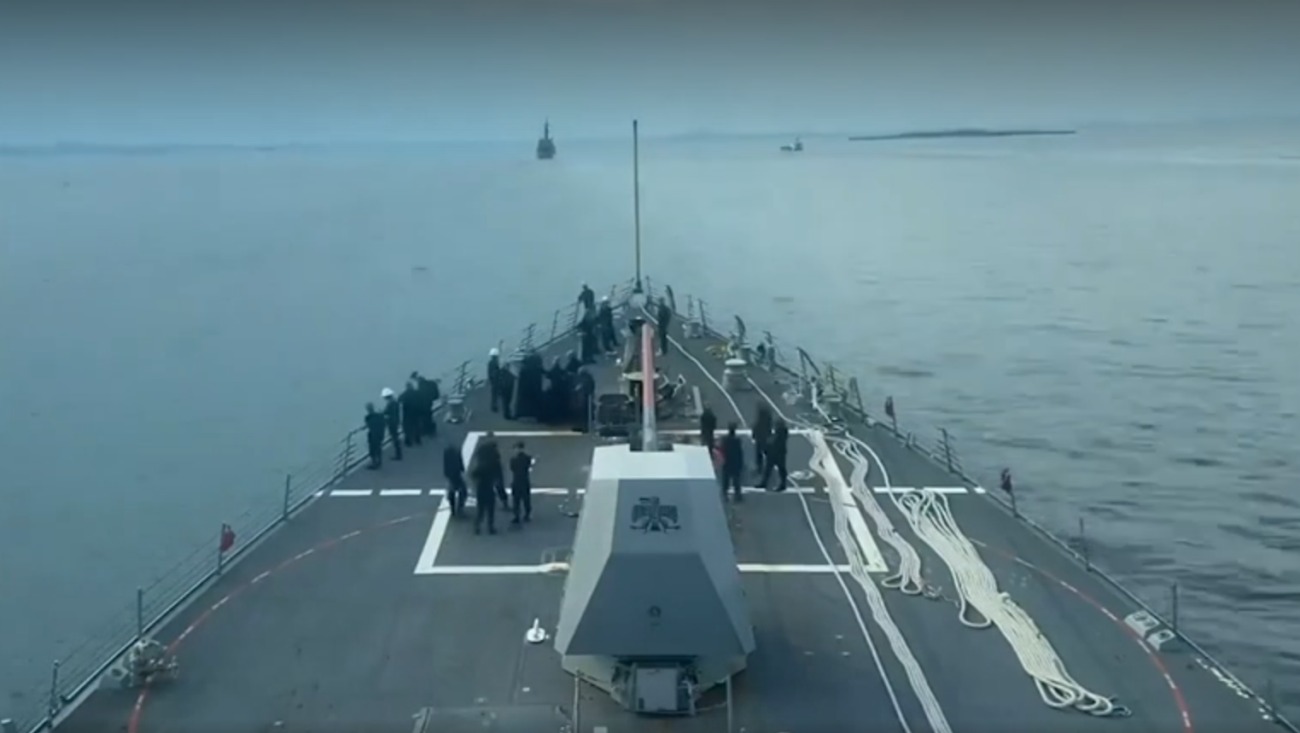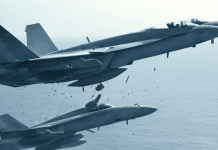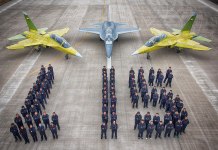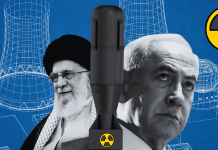Power struggles in the existing world order are reflected in the increased frequency of encounters between US warships and aircraft with their Chinese and Russian counterparts. A recent Facebook post by the Navy hinted at tête-à-tête with Chinese and Russian naval vessels near Guam.
The said encounter is reported to have occurred near Guam, the American military base in the Western Pacific Ocean. However, the post was later taken down.
Guam is the US’s westernmost point and territory. It is home to three major military bases used by the US Air Force, Navy, and Marine Corps.
The post on August 6 was accompanied by a video of the Arleigh Burke-class guided-missile destroyer USS Rafael Peralta’s homecoming to Japan’s Yokosuka naval base, its home port, following an extended summer patrol.
The 9,700-ton destroyer arrived at the base a day prior, and the post indicated the extent of the joint military drills between China and Russia. This was the fourth joint patrol of the Chinese and Russian navies.
The joint naval formation entered the South China Sea via the Balintang Channel. It patrolled around South Korea’s Jeju Island in the East China Sea. It then passed through the Osumi Strait near Japan before heading southward to the South China Sea.
The US Navy conducts joint patrols with partner countries in the South China Sea to ensure freedom of navigation. However, the PLA Navy, which considers the disputed waters its “backyard,” seldom carries out the patrol.
During this patrol, it encountered the USS Peralta, assigned to the US Navy’s largest Destroyer Squadron, 15. This squadron consists of nine Arleigh Burke-class vessels forward-deployed to Yokosuka. It is the main force of the US Seventh Fleet’s principal surface force in the Western Pacific and Indian Oceans.
The warship’s official Facebook page said it conducted a freedom of navigation operation in the South China Sea, held joint exercises with U.S. treaty ally Japan, and “protected Guam during Chinese and Russian deployments in the area.”
USS Peralta released photos that showed the warship in the South China Sea in early May before joining Japan’s Maritime Self-Defense Force in the Philippine Sea in mid-June. On July 18, the destroyer called at Guam before returning to Yokosuka.
The original post did not provide much detail. However, Newsweek reported that it was later edited to delete the part about the encounter.
China and Russia did not reveal the route of their fourth joint maritime patrol. The four-ship formation traversed parts of the Western and Northern Pacific Oceans for 15 days. Beijing and Moscow did not make any mention of approaching Guam, but the distance of their patrol suggests that they were in the vicinity of the island’s waters.
China deployed the Type 052D destroyer Yinchuan, Type 054A frigate Hengshui, and Type 903 replenishment ship Weishanhu for the joint patrol, while Russia sent the Steregushchiy-class corvette Sovershennyy.
Encounter With Chinese Warship
This is not the first time that the US forces encountered their Chinese and Russian counterparts. In July, China and Russia sent four bombers into Alaska’s air defense zone as they came within 200 miles of the US coast.
Forget J-20, China’s H-20 Stealth Bomber Threatens ‘Easy Penetration’ Of LAC; How Can IAF Respond?
In the same month, four Chinese naval warships conducted freedom of navigation operations in the waters north of the Aleutian Islands, which is inside the US’s exclusive economic zone, which extends 200 nautical miles from the shoreline.
In June 2023, the USS Chung-Hoon, a US Navy destroyer, had a close encounter with a Chinese warship in the Taiwan Strait. The Chinese ship executed what was described as an “unsafe” maneuver, crossing the path of the US ship and forcing it to slow down to avoid a collision.
Another significant incident occurred in 2018 when a Chinese warship came dangerously close to the USS Decatur in the South China Sea. The Chinese vessel maneuvered within 45 yards of the US ship, prompting the US Navy to describe the action as “unsafe and unprofessional.”
These encounters often occur during “freedom of navigation” operations conducted by the US Navy to challenge China’s territorial claims in the region. China views these operations as provocations, while the US maintains they are necessary to uphold international law and ensure free passage through these strategic waters.

Defending Guam
Guam houses the Andersen Air Force Base, Naval Base Guam, and the in-progress Camp Blaz. As the westernmost American territory and close to the South China Sea, it will play a crucial role in potential conflict with China.
The US has expedited the completion of the Guam Missile Defense System in response to China’s advancements in hypersonic technologies, including cruise missiles and hypersonic glide vehicles.
The US envisages a comprehensive missile defense system comprising various land, sea, and air-based weapons, sensor and communications systems, and command and control platforms.
The system will work to take down incoming ballistic, cruise, and hypersonic missiles. The first test, scheduled for 2025, will involve launching a Standard Missile-3 interceptor using the Aegis Weapon System from Andersen Air Force Base (AAFB) against a medium-range ballistic missile.
As reported by the EurAsian Times earlier, the target will be air-launched from a C-17 or similar aircraft at an altitude exceeding 20,000 feet, at least 800 nautical miles east of Guam in the Broad Ocean Area (BOA) of the western Pacific Ocean.
The interceptor will launch from Northwest Field on AAFB, with its first stage booster separating shortly after launch and landing in a remote, uninhabited area of AAFB.
The interception will occur in the exosphere, more than 200 nautical miles from Guam. The assessment said that debris from the intercept and physical components from the target and interceptor would fall into the ocean more than 88 nautical miles from Guam and sink to the ocean floor.
- Ritu Sharma has been a journalist for over a decade, writing on defense, foreign affairs, and nuclear technology.
- The author can be reached at ritu.sharma (at) mail.com
- Follow EurAsian Times on Google News




